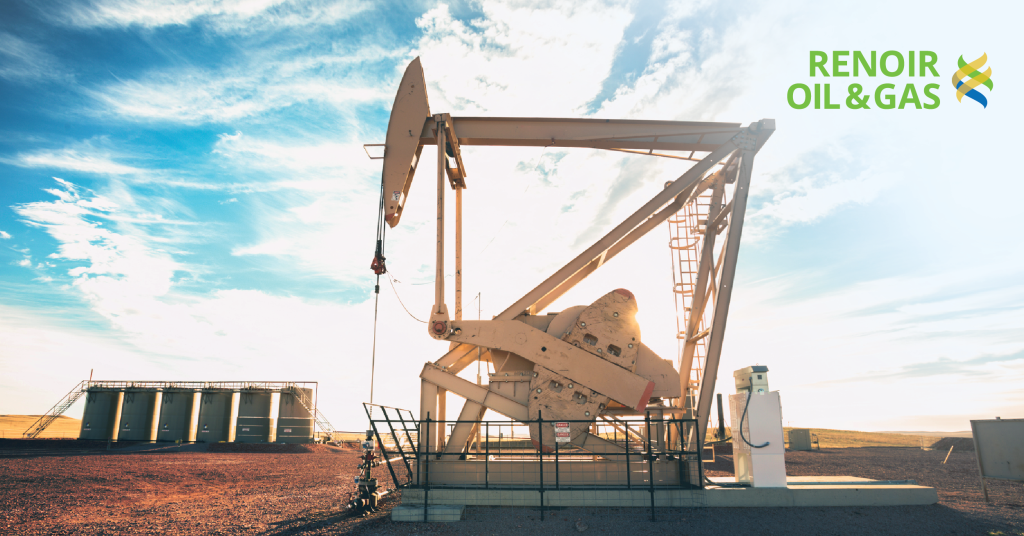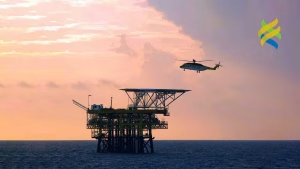Onshore oil and gas companies in North America that rely on fracking (hydraulic fracturing) face a myriad of challenges associated with hydraulic fracturing. Unlike traditional reservoirs, shale rock formations require different techniques to recover oil and natural gas due to their patchy nature and low permeability.
High operational demands to maximize production
To maximize resource extraction and achieve economic production from these formations, onshore fracking operations often need to drill multiple wells, typically between five and seven, in a single location. This approach allows the wells to intersect the productive zones more effectively. However, this means it requires significant upfront investment in infrastructure, such as the construction of well pads and the installation of rigs.
The construction of walking rigs, which can move between wells on the same pad, is a time and cost saving solution for smaller onshore operations. Larger operations may need multiple rigs on a single site.
The entire process from pad construction to the completion of the fracking operation means that the fracking process is lengthy, taking up to 110 days on average. The high daily operating costs, estimated at approximately US$300,000, highlight the pressure to reduce the time required for each stage of the process, and consequently the overall operating costs.
Managing costs associated with fracking operations through an improvement framework
The complexity of hydraulic fracturing processes is further exacerbated by the dependence on a network of suppliers and contractors to provide critical equipment, materials, and services. The involvement of multiple stakeholders requires effective work planning and scheduling, along with strict adherence to project schedules.
Failure to adhere to systems designed to oversee various operational aspects can lead to project delays, increasing financial pressures on companies. To address these challenges, the following industry-tested approaches and/or systems can improve coordination among stakeholders and ensure adherence to established processes, which are critical to managing the high costs associated with fracking operations:
Processes and Management Controls
- Performance Management: How does any organization manage its own and contractors’ performance? The first step is to define what aspects of the operation are critical to the success of the work being done. Once that is agreed upon, the organization must determine what the critical pathways to success are for each of those operational processes and the points within those processes which can and should be measured. The organization can then develop Key Performance Indicators to measure the effectiveness of the processes and those who execute them. These KPIs must be developed in a cascading manner, measuring what is important at every level within your organization and must be associated with measures designed to hold people accountable.
- Procedural management: Implement a continuous process improvement framework that includes activities such as audits, compliance monitoring, root cause analysis and the documentation of lessons learned, to ensure that processes remain effective.
- Management Control System: Both Performance and Process must be managed through a structured and sustainable Management System, which consists of a cascading series of formal meetings, Scorecards and Reports, at the appropriate level and cadence, which allows for control of the work in the moment and over time. This system should be formalized and strongly structured, but must also remain evergreen, in that it is flexible enough to evolve as processes and needs mature.
Schedules/Timelines
- Unified Scheduling: Work scheduling should be comprised of one over-arching scheduling, incorporating project scheduling at long-term intervals, such as a year or six-months, as well as nearer term scheduling such as one month and two to one-week frozen schedules. This type of unified scheduling gives an organization shared visibility into the future and allows for flexibility right up until the point of execution. It will also create the environment necessary to reduce overall well-cycle time.
- Realistic Estimates: By analysis of historical project completion data, an organization has the ability to estimate completion time with a high level of accuracy. These estimates should not be viewed as the best an organization can do, however. They should, instead, be used as a baseline to help define what improvements are desirable and achievable.
- Schedule Adherence: The best schedules and estimates are only as good as the discipline an organization has around adherence to those schedules. It is of vital importance that adherence to developed schedules be rigorously managed and that only well-defined break-in work occurs, and only with the intercession of upper leadership.
People Behavior
- Behavioral change: Implement an MCS to enable the implementation of clear and actionable Key Performance Indicators (KPIs) that support process improvement and clarify accountability, to shape organizational focus and behavior.
- Performance review meetings: Clearly define operating procedures and conduct regular performance meetings to review compliance, to ensure a high level of operational discipline. These meetings should clarify roles and responsibilities and address questions such as “Who is responsible for what?” and “How are we performing?”. Information from the action and decision log should feed into the KPI report, enabling immediate corrective action to meet daily, weekly, and monthly targets.
- Performance improvement: Use performance scorecards to track progress and incentivize desired behaviors.
Change management for inefficient processes and performance
Hydraulic fracturing involves many steps, including drilling, cementing and testing, well completion, fracking, production and fracking fluid recycling. With numerous suppliers and contractors involved, there is a great deal of planning, scheduling and coordination, with careful consideration of timing and cost.
Balancing operational efficiency and profitability remains a constant challenge for onshore fracking operations. Renoir has the expertise and unique capabilities to help your organization “see the big picture”, develop the management tools, frameworks, and processes required to drive positive change and support the implementation of these tools for long-term sustainability.
Facing fracking operation challenges in meeting schedules and consistently exceeding budgeted operating costs?







